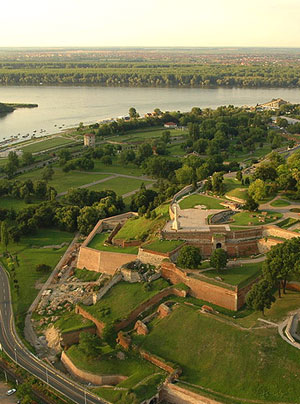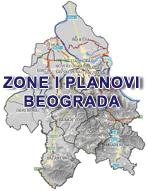Landscape Architects Can Help Heal Serbia
- Преузми линк
- X
- Имејл адреса
- Друге апликације
Landscape Architects Can Help Heal Serbia
This guest post is by Nevenka Milic Chavez, project coordinator for City of Albuquerque, and Maja Todorović Izquierdo, Assistant Professor at the Faculty of Arts and Design, Megatrend University in Belgrade. Read the full article reprinted from the ASLA International PPN Newsletter, Winter 2012.
Source: http://dirt.asla.org/2012/01/31/landscape-architects-can-help-heal-serbia/

Serbia is a land of great natural beauty—mountains, canyons, caves, gorges, and primeval forests that have been torn apart for centuries by war.
The land has been cultivated for more than seven thousand years. Around 5,300 BC, the people of the Lepen Whirl culture began to expand from Djerdap, the biggest gorge in Europe, domesticating animals and starting to farm. Fields expanded, towns became cities that included small parks, and, during the middle ages, defensive castles and religious monasteries created walled gardens for aromatic and healing herbs as well as relaxation and meditation.
Turks occupied the area from 1459 to 1804, establishing large fortifications around major cities, with open spaces in the middle. After the Turks were driven out, though, many of the forts were torn down, leaving vast spaces for new parks, and green belts around towns. For example, the Kalemegdan park in Belgrade, which was constructed in 1925, offers views of both the Danube and the Sava rivers.

The most famous park in Belgrade, Kalemegdan was constructed in 1925.
When Yugoslavia fell into civil war after the death of President Tito and Slobodan Milosovic came into power in Serbia, the federation broke apart into smaller states and ethnic enclaves like Serbia, Slovenia, Croatia, Bosnia and Herzegovina, and Macedonia, with millions of people displaced from their homes, widespread slaughter, and heavy NATO bombing. Buildings, bridges, and parks all suffered and many collapsed.
After peace was restored, Serbia was left with an enormous rebuilding challenge. While there were established landscape architecture education programs and organizations, landscape architects continue to face the challenge of revitalizing damaged downtown and metro areas, restoring parks and green belts, and making urban forests more appealing to people who want to escape the pressures of a fragile economy, constant signs of the war, and an incessant media.
Perhaps landscape architects will now be able to re-introduce healing and inspirational gardens where people who still suffer from trauma can find a quiet place to recuperate with family and friends. Landscape architects may also get involved in planning scenic routes, creating signage, and laying out rest areas for tourists, because Serbia has so much natural beauty and so few visitors.
This guest post is by Nevenka Milic Chavez, project coordinator for City of Albuquerque, and Maja Todorović Izquierdo, Assistant Professor at the Faculty of Arts and Design, Megatrend University in Belgrade. Read the full article reprinted from the ASLA International PPN Newsletter, Winter 2012.
Image credits: (1) Povlen Mountain, Serbia / Uroš Petrović, (2) Kalemegdan /Igor Jeremićm. June 2007, (3) “Urban Gap” design for a pocket park / Youth of Serbian Association of Landscape Architects, (4) Birds on the Tisa River / Uroš Petrović, (5)“Devil Towers” National monument /Uroš Petrović
- Преузми линк
- X
- Имејл адреса
- Друге апликације






Коментари
Постави коментар
Ovde možete ostaviti vaš komentar i sugestije